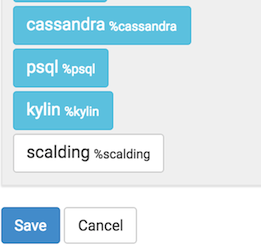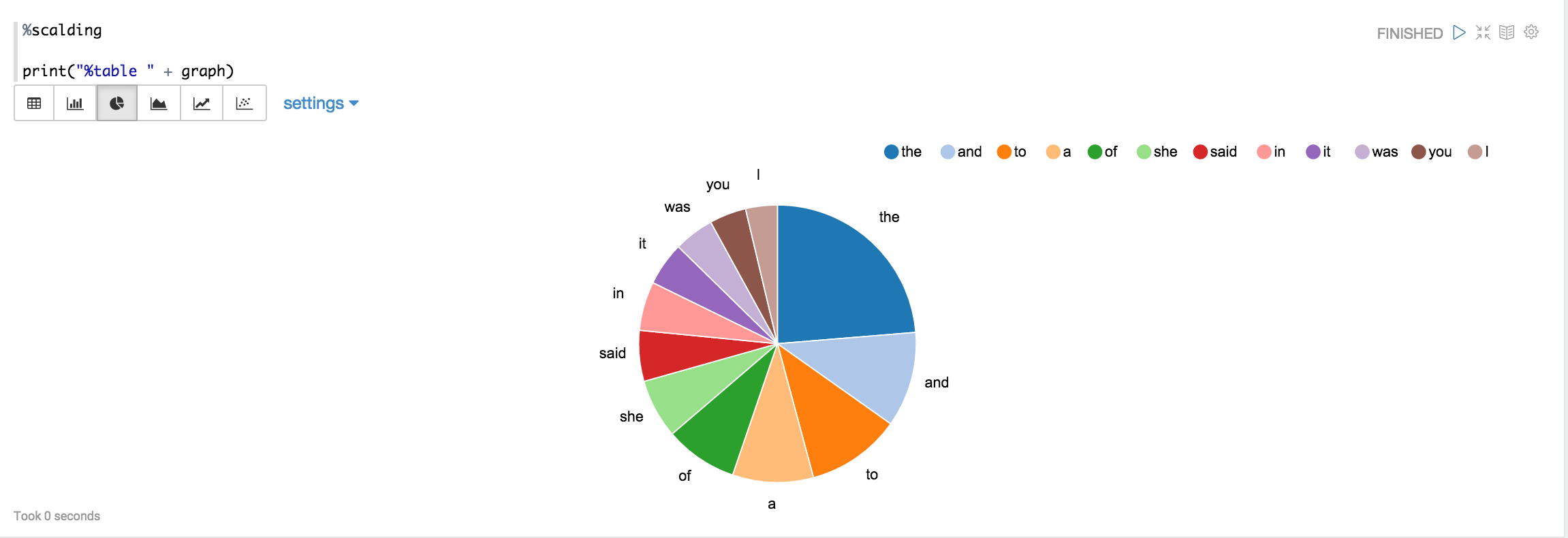Scalding is an open source Scala library for writing MapReduce jobs.
You have to first build the Scalding interpreter by enable the scalding profile as follows:
mvn clean package -Pscalding -DskipTests
In a notebook, to enable the Scalding interpreter, click on the Gear icon,select Scalding, and hit Save.


Zeppelin comes with a pre-configured Scalding interpreter in local mode, so you do not need to install anything.
In example, by using the Alice in Wonderland tutorial, we will count words (of course!), and plot a graph of the top 10 words in the book.
%scalding
import scala.io.Source
// Get the Alice in Wonderland book from gutenberg.org:
val alice = Source.fromURL("http://www.gutenberg.org/files/11/11.txt").getLines
val aliceLineNum = alice.zipWithIndex.toList
val alicePipe = TypedPipe.from(aliceLineNum)
// Now get a list of words for the book:
val aliceWords = alicePipe.flatMap { case (text, _) => text.split("\\s+").toList }
// Now lets add a count for each word:
val aliceWithCount = aliceWords.filterNot(_.equals("")).map { word => (word, 1L) }
// let's sum them for each word:
val wordCount = aliceWithCount.group.sum
print ("Here are the top 10 words\n")
val top10 = wordCount
.groupAll
.sortBy { case (word, count) => -count }
.take(10)
top10.dump
%scalding
val table = "words\t count\n" + top10.toIterator.map{case (k, (word, count)) => s"$word\t$count"}.mkString("\n")
print("%table " + table)
If you click on the icon for the pie chart, you should be able to see a chart like this:

The current implementation of the Scalding interpreter does not support canceling jobs, or fine-grained progress updates.
The pre-configured Scalding interpreter only supports Scalding in local mode. Hadoop mode for Scalding is currently unsupported, and will be future work (contributions welcome!).